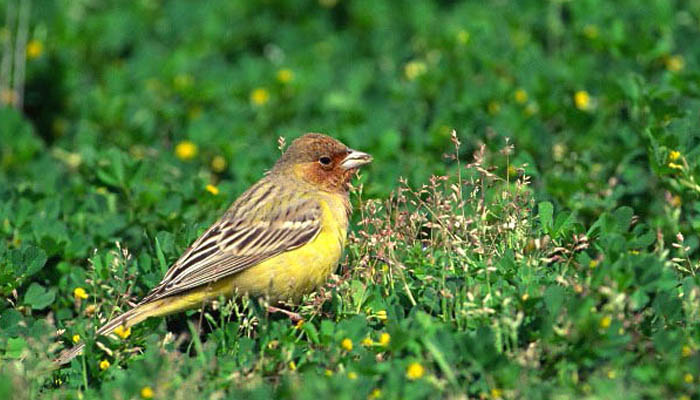
English: Red-headed Bunting
Russian: Желчная овсенка
Mongolian: Хүрэнтолгойт хөмрөг
German: Braukopfammer
French: Bruant a tete rousse
Japanese: チャキンチョウ (Chakincho)
Body
length: 15-16
½ cm.
Very closely related to Black-headed Bunting, and hybridizes with latter
where the two meet (SE Caspian Sea). Breeds on steppe (cultivated or not) with
some bushes or scattered trees, in semi-desert, on open mountain slopes or
high-lying plains. Summer visitor (by Volga mostly early Jun-early Aug),
winters in India. Not that shy. Rare records in W Europe, but all these are
generally regarded as involving escaped cagebirds; a few, however, probably
refer to genuine vagrants.
Identification: Fairly
big and rather long-tailed. No white on tail. ♂: Unmistakable. Besides
red-brown mask, note yellowish rump and yellow-green, streaked mantle.
- ♀:
Rather nondescript and hard to identify. Note: long, heavy, light grey bill;
narrow buff-white eye-ring; dull light brown mantle /back and head/ nape with
only modest, fine streaking on mantle and forecrown; usually lightly streaked
yellow-green or yellowish rump; wholly unstreaked dirty yellowish-white
underparts and bright yellow undertail-coverts.
- 1st winter: Like ♀, but has
buffish-white breast (sometimes with fine streaks), more heavily streaked
grey-brown mantle /back and rump without yellow-green tone. Very like
Black-headed Bunting, and often inseparable from that species.